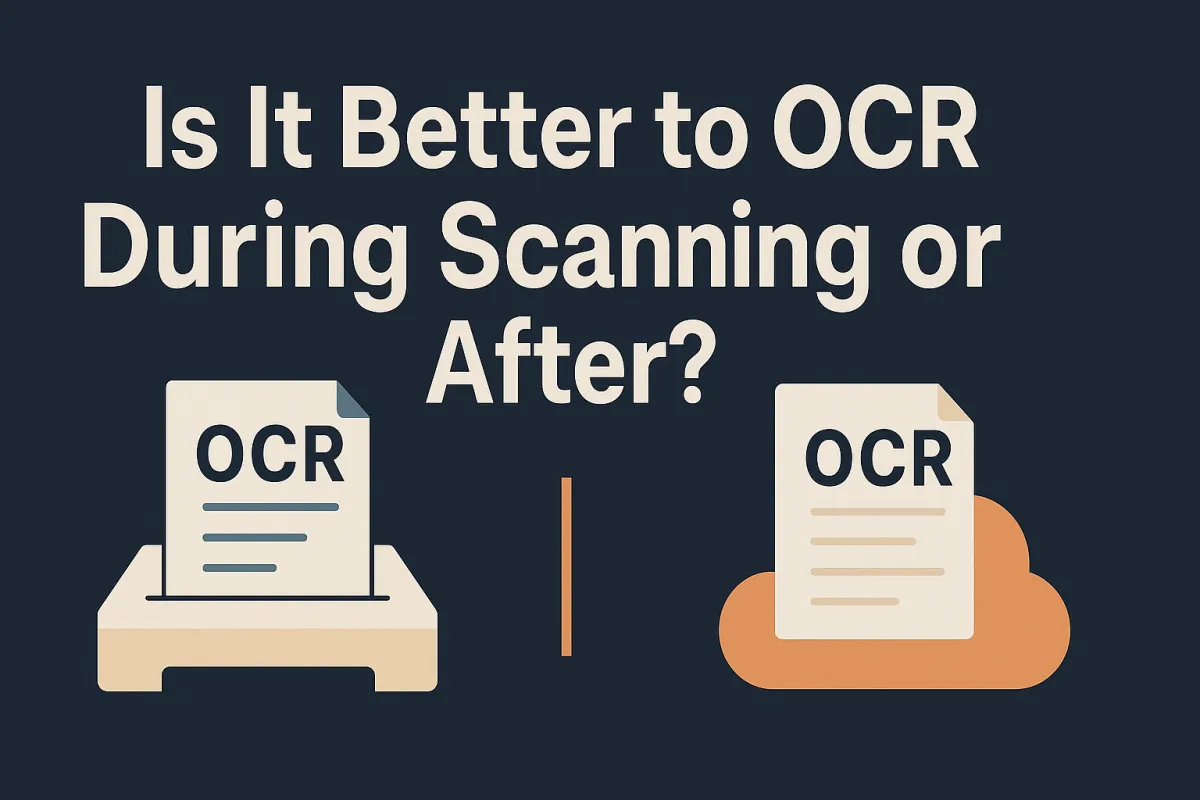
Is It Better to OCR During Scanning or After? Pros, Cons, and Why Post-Scan OCR Is the Best Choice
By: USA IMAGING, Inc.
When scanning documents, OCR—Optical Character Recognition—is what turns static images into searchable, usable digital files. But one key decision can impact everything: Should OCR be applied during scanning, or after scanning is complete?
At USA Imaging, Inc., we specialize in professional scanning solutions for government agencies, law firms, healthcare providers, and engineering firms. Over the years, we've found a clear answer:
We recommend applying OCR after scanning.
Here’s why.
Option 1: OCR During Scanning (Inline OCR)
Pros:
✅ Faster Output: Documents are searchable immediately after scanning.
✅ Good for Uniform Documents: Great for simple, standardized jobs like basic invoices or forms.
✅ Streamlined Workflow: OCR happens automatically during batch scanning.
Cons:
⚠️ Lower Accuracy: If pages are skewed, faint, handwritten, or cluttered, OCR results can be unreliable.
⚠️ No Error Correction: There's no opportunity to fix poor scans before OCR is applied.
⚠️ Resource Strain: Inline OCR places high demand on the scanner and workstation, increasing the risk of lag, crashes, or corrupted files.
Option 2: OCR After Scanning (Post-Processing)
Pros:
✅ Higher Accuracy & Quality Control: Scans can be cleaned, rotated, enhanced, or re-scanned before OCR, resulting in better character recognition.
✅ Custom OCR Settings: Allows for zone-based OCR, multi-language support, and adjustments based on document type (legal, handwritten, tabular, etc.).
✅ Dedicated Server Power: At USA Imaging, we run OCR on a separate, high-performance server—avoiding slowdowns and ensuring stability even for massive files.
✅ Error Isolation: If OCR fails, it doesn’t affect the original scan. The process can be retried without starting over.
Cons:
⚠️ Longer Processing Time: It takes longer since it’s a two-step workflow.
⚠️ Requires Additional Resources: Needs dedicated software and OCR computing power—which we provide as part of our service.
Why USA Imaging, Inc. Recommends Post-Scan OCR
We believe quality matters more than speed. That’s why we apply OCR after scanning is complete. Here’s how it benefits our clients:
📂 Better Accuracy for Search and Compliance: Legal teams, auditors, and engineers rely on text precision. Post-scan OCR lets us catch and correct errors.
⚙️ Server-Based OCR Workflow: We use dedicated OCR servers that run industry-grade engines (such as ABBYY or Adobe OCR), ensuring speed and stability without taxing scanning equipment.
🔍 Audit-Ready Searchability: With post-scan QA, your documents pass regulatory scrutiny and are ready for FOIA requests, litigation discovery, or historical archiving.
🧠 Human Oversight: Our process includes review and re-OCR options when low-confidence text is detected—something inline OCR can’t offer.
Final Verdict: Speed vs. Accuracy
If your goal is basic access to everyday office records, inline OCR might suffice.
But if you're dealing with:
Sensitive legal files
Historical or damaged pages
Handwritten forms
High-stakes document retention requirements
...then post-scan OCR is the clear winner.

Ready to Digitize with Confidence?
At USA Imaging, Inc., we don’t just scan—we transform your paper records into reliable, searchable digital archives with OCR you can trust.
📞 Call us today or 📩 Request a free estimate to find out how we can digitize your documents with precision, power, and peace of mind. Reach out today: 858-513-6565, email: [email protected]
